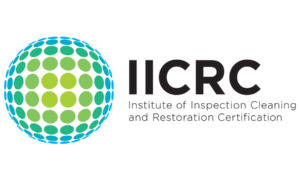Why Use Thermal Imaging?
Moisture Detection in Walls and Ceilings – Thermal imaging is a great way to identify water damage in walls, ceilings and floors. By detecting the difference in temperature between a wet area and surrounding dry areas thermal imaging can help detect moisture issues that would not be visible during a limited visual home inspection. It is also great at identifying areas where the insulation contractor failed to insulate adequately.
Energy Audits – Thermal imaging has been a great way to help homeowners save money. Heat loss and/or cold air influx can be detected and proactive measures can be taken to help improve the energy efficiency of residential and commercial structures.
Once the energy wasting areas are identified, changes can be made to make what can be a dramatic difference in energy consumption which means less money out of pocket.
Plumbing Inspections – Water leaks from the plumbing system often go undetected until major damage has occurred. We can scan in, under, and around plumbing fixtures in the home to determine if there is active leaking going on. Since this tool is not a moisture meter we will use it to find heat anomalies and then pursue the issue further to attempt to determine the source and cause of the leak.
Thermal image scanning can detect temperature anomalies in the plumbing system not visible to the naked eye which may be a precursor to a larger issue. The resulting Thermal Image Scan report can be a great aid for the repair plumber hired to address the identified issues.
Insect Activity in Wood – Wood destroying insect activity can be detected using thermal imaging techniques due to the heat generated by active infestations. Active termite activity produces a lot of heat that is often visible to the infrared camera. Minor activity may not be detectable but areas not normally visible to the naked eye can be identified, afterwards a more invasive or technically intense inspection can be carried out by the appropriate professional.
Flat Roof Inspections – If you have a leaky new to mid life flat roof and have been told that you don’t need a new roof, call us first. We may be able to save you a substantial amount of money. Thermal imaging can be used to detect the exact location of the leak and mark the affected area so that repairs can be made to the leaking area. If, however, the roof is older, you should forgo the thermal imaging and simply invest in a new roof.
Electrical Inspection – Dirty or lose electrical connections and other electrical anomalies can cause power outages and potentially fires. We can inspect the electrical panels and outlets to detect issues before there is any costly outage. Thermal imaging can detect hot spots in the electrical system not visible to the naked eye which may be a precursor to a much larger issue. The resulting report can be a great tool for the repair electrician hired to address any identified issues.
Abnormal heating associated with excessive or high resistance current flow is the main cause of many problems in many electrical systems. Infrared thermography allows us to see these invisible thermal signatures of impending damage before the damage happens. When current flows through an electric circuit, part of the electrical energy is converted into heat energy. This is normal. But, if there is an abnormally high current flow or abnormally high resistance in the circuit, high heat is generated which is wasteful, and potentially damaging.
Infrared electrical inspections find any hot spots caused by defects in connections and components. Infrared thermography is also used to find areas of excess heat (caused by increased resistance) so that problems can be corrected before a component fails, causing damage to the component, creating safety hazards, such as fires, and productivity loss. Because increased heating is a sign of failure, infrared is the best diagnostic tool available for finding these hot connections in the early stages of degeneration.
What Thermal Image Scanning is NOT:
X-RAY VISION – The infrared thermal imaging camera is NOT an X-ray vision scope. It does not provide the user with an immediate Superman S on their chest with the ability to clearly see inside walls. Instead, it identifies thermal differences.
MOISTURE METER – The infrared thermal imaging camera is NOT a moisture meter. It just identifies thermal anomalies. This device aids in identifying any areas that need further investigation.
RISK ELIMINATOR – The infrared thermal imaging camera does NOT completely remove the risks of concealed damage.
SILVER BULLET – The infrared thermal imaging camera is NOT a silver bullet solution, however, when it is used in conjunction with other technologies thermal imaging has helped to identify issues that are rarely identified during the limited visual home inspection process.
Contact Next Level Home Inspection to get started with your thermal imaging inspection for your Boise home.
Request a Callback
Fill in the form below to request a callback to discuss your needs.



